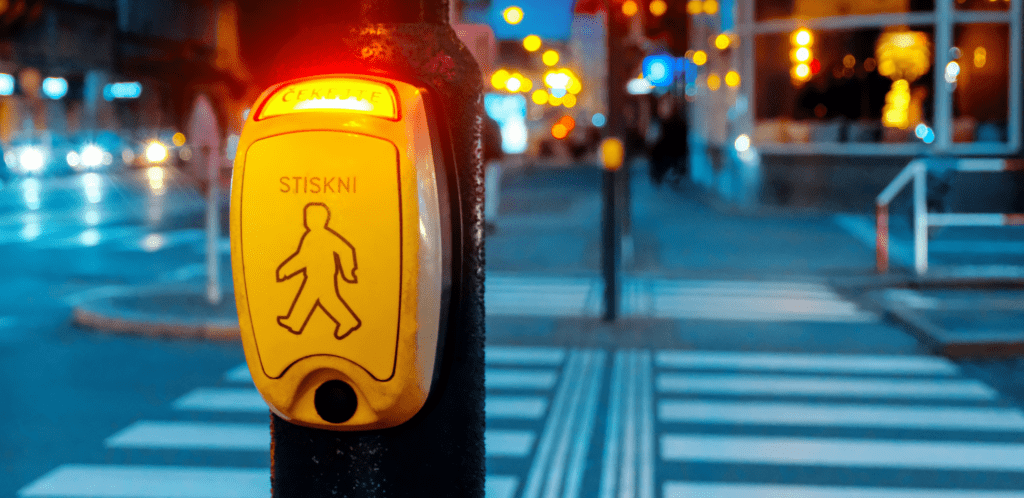
Navigating the rules of the road can be complex, especially when considering the rights of pedestrians, who are among the most vulnerable users of our roads.
Ensuring their safety requires a careful understanding of when they do and do not have right of way.
When Pedestrians DO Have Right of Way
At Junctions and Crossings
- Rule 8 of the Highway Code specifies that if a pedestrian has begun to cross a road at a junction and a driver wishes to turn into that road, the pedestrian has priority. The driver is expected to give way.
- Rule 195 mandates that drivers must give way to pedestrians on a zebra crossing as soon as the pedestrian steps onto it.
- During the flashing amber phase at pelican crossings, drivers are required to give way to any pedestrians on the crossing, as outlined in Rule 196.
Pulling Out of a Driveway
- According to Rule 206, drivers must give way to pedestrians on the pavement, underscoring their right of way when a vehicle is entering or exiting a driveway.
When Pavements are Closed
- In situations where pavements are closed, pedestrians may need to walk on the road. The Highway Code advises them to keep to the right-hand side to ensure they are visible to oncoming traffic.
When Pedestrians DON’T Have Right of Way
Pedestrians are not permitted on motorways or slip roads except in emergencies. This includes when a vehicle breaks down and the occupants need to use the emergency telephone on the hard shoulder. Pedestrians should minimise walking and stay as far from the motorway lanes as possible.
Legal Obligations and Safety Considerations
- Even if a driver has right of way, they might still be accountable in the event of a collision with a pedestrian. This is because the law recognises the inherent risk that motor vehicles pose to others, particularly to pedestrians.
- Rule 206 offers examples where drivers, even when having the right of way, should exercise additional caution, such as when passing parked vehicles or driving past buses at stops.
Best Practices for Pedestrians and Drivers
- Pedestrians walking on roads without pavements, such as country lanes, are advised to walk facing oncoming traffic, switch sides at sharp right bends for better visibility, and ideally wear high-visibility clothing.
The Law of the Road vs. The Laws of Physics
- Regardless of legal rights, pedestrians are reminded that in any collision with a vehicle, they are likely to suffer the most. Both pedestrians and drivers are encouraged to exercise caution: Stop, Look, Listen, and if in doubt, do not step onto the road.
The overarching message is one of caution and respect for all road users, with a focus on ensuring the safety of pedestrians through adherence to the Highway Code and the application of common sense and courtesy.
Frequently asked questions
No, pedestrians do not always have the right of way. While they have priority in many situations, such as at zebra crossings and when crossing at junctions, there are instances, like on motorways, where they do not.
You must give way to the pedestrian. The law requires drivers to stop once a pedestrian has moved onto a zebra crossing (Rule 195 of the Highway Code).
Pedestrians are not allowed on motorways or slip roads except in emergencies. They are, however, permitted to walk on country lanes and other roads without pavements, provided they take care to ensure their own safety.
A flashing amber light indicates that drivers must give way to any pedestrians currently on the crossing. Once the crossing is clear, drivers may proceed with caution.
Rule 206 stipulates that drivers must always give way to pedestrians on the pavement, regardless of whether the driver is entering or exiting a driveway.
Unlike in some countries where ‘jaywalking‘ is illegal, in the UK, pedestrians can legally cross the road at any point, provided it is safe to do so.
When pavements are closed, pedestrians should walk on the road while keeping to the right-hand side to face oncoming traffic, ensuring they are visible to drivers.
Pedestrians should keep to the right, facing oncoming traffic. On sharp right bends, they should cross to the other side for better visibility. Wearing high-visibility clothing is also advised.
Fault is determined by the specifics of each incident. Drivers have a duty of care even when they have the right of way and could still be liable if their actions are deemed to have been unsafe.
While not legally required, it is best practice to slow down and be prepared to stop when approaching a zebra crossing, in case pedestrians are about to enter the crossing.


